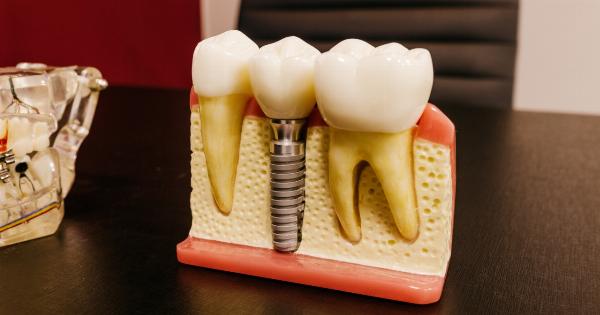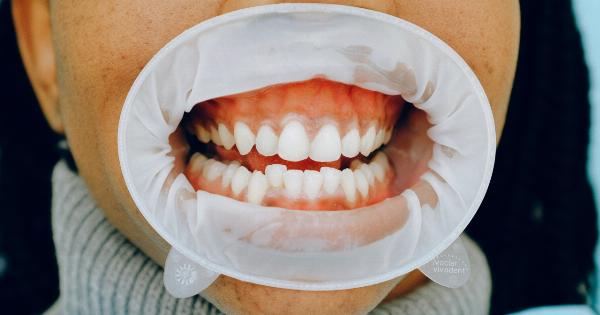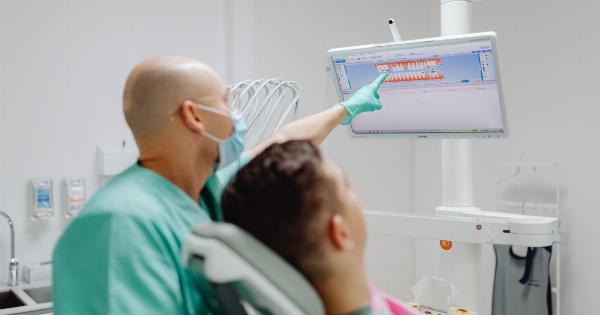Stomatitis is a common condition characterized by inflammation and soreness in the mouth. It can affect the inner lining of the cheeks, gums, tongue, lips, and roof or floor of the mouth.
Stomatitis can be caused by various factors, including viral, bacterial, or fungal infections, autoimmune disorders, allergies, and certain medications. The severity of stomatitis can range from mild discomfort to severe pain and difficulty eating or speaking.
Types of Stomatitis
1. Aphthous Stomatitis
Aphthous stomatitis, commonly known as canker sores, is one of the most common types of stomatitis. It presents as small, painful ulcers that can occur on the inside of the lips, cheeks, tongue, or throat.
Aphthous stomatitis is thought to be caused by immune system dysfunction, certain foods, injury to the mouth, stress, or hormonal changes. The ulcers usually heal on their own within 1-2 weeks, but topical analgesics or mouth rinses can help alleviate pain and aid in healing.
2. Herpetic Stomatitis
Herpetic stomatitis is caused by the herpes simplex virus (HSV) and is highly contagious. It typically presents as multiple small blisters that can coalesce and form larger ulcers.
The blisters are often preceded by flu-like symptoms, such as fever, sore throat, and swollen lymph nodes. Herpetic stomatitis usually resolves within 10-14 days but antiviral medications may be prescribed to speed up healing and reduce symptoms.
3. Candida Stomatitis
Candida stomatitis, also known as oral thrush, is caused by an overgrowth of the Candida fungus in the mouth. It commonly affects individuals with weakened immune systems, such as those with HIV/AIDS, diabetes, or undergoing chemotherapy.
Symptoms include creamy white patches that can be wiped off, redness, and discomfort. Antifungal medications, such as oral rinses or lozenges, are usually prescribed to treat candida stomatitis.
4. Allergic Stomatitis
Allergic stomatitis occurs when an individual has an allergic reaction to certain substances, such as certain foods, oral hygiene products, or medications. It typically presents as red, itchy, or swollen patches or blisters in the mouth.
Identifying and eliminating the allergen is the primary treatment for allergic stomatitis, along with symptomatic relief using antihistamines or topical corticosteroids.
5. Erythema Multiforme
Erythema multiforme is a rare inflammatory skin condition that can also affect the mucous membranes, including the mouth. It is often triggered by infections, medications, or autoimmune reactions.
The characteristic feature of erythema multiforme is the formation of target-like lesions, with a dark red center and a paler ring surrounding it. Treatment involves addressing the underlying cause, symptomatic relief, and, in severe cases, systemic corticosteroids.
Management of Stomatitis
1. Pain Management
One of the primary goals in managing stomatitis is to alleviate pain and discomfort associated with the condition. Topical numbing gels or mouth rinses containing benzocaine or lidocaine can provide temporary relief.
Over-the-counter pain relievers, such as acetaminophen or ibuprofen, may also help reduce pain and inflammation.
2. Maintaining Oral Hygiene
Maintaining good oral hygiene is essential to prevent further infections and promote faster healing. Gentle brushing with a soft-bristled toothbrush and regular flossing can help remove any debris or bacteria from the mouth.
It is advisable to avoid harsh mouthwashes containing alcohol, as they can further irritate the inflamed tissues.
3. Avoiding Irritants
Identifying and avoiding irritants that trigger stomatitis can help prevent recurrent episodes. This may include avoiding certain foods or beverages, such as spicy or acidic foods, carbonated drinks, or alcohol.
Quitting tobacco use and eliminating any potential allergens or irritants from oral hygiene products, such as toothpaste or mouthwash, is also important.
4. Medications
In some cases, medications may be prescribed to manage the underlying cause or alleviate symptoms. Antiviral medications, such as acyclovir or valacyclovir, may be used in the treatment of herpetic stomatitis.
Antifungal medications, such as nystatin or fluconazole, are commonly prescribed to treat candida stomatitis. In severe or recurrent cases, corticosteroids or immunosuppressive drugs may be prescribed.
5. Dietary Modifications
For individuals with stomatitis, certain dietary modifications can help reduce discomfort and promote healing. Consuming soft, bland foods that are easy to chew and swallow, such as mashed potatoes, soups, and yogurt, can be beneficial.
Avoiding rough or hard foods, as well as extremely hot or cold foods, can prevent further irritation of the inflamed tissues.
6. Warm Saltwater Rinses
Rinsing the mouth with warm saltwater can provide relief and aid in healing. Dissolve half a teaspoon of salt in a glass of warm water and swish the solution around the mouth for about 30 seconds before spitting it out. Repeat this several times a day.
7. Herbal Remedies
Some herbal remedies, such as aloe vera gel or chamomile tea, may help reduce inflammation and promote healing. Applying a small amount of aloe vera gel to the affected area or rinsing the mouth with chamomile tea can provide soothing effects.
8. Regular Dental Check-ups
Scheduling regular dental check-ups can help monitor the condition and ensure proper management. Dentists can provide professional advice, recommend appropriate treatments, and address any concerns or complications associated with stomatitis.
9. Stress Management
Stress can exacerbate stomatitis symptoms. Engaging in stress-reducing activities such as exercise, meditation, or yoga, can help manage stress levels and potentially reduce the frequency or severity of stomatitis outbreaks.
Seeking support from family, friends, or mental health professionals can also be beneficial.
10. Follow-up Care
Following up with healthcare providers and regularly reviewing the effectiveness of the management plan is crucial.
If stomatitis symptoms persist or worsen despite home remedies or prescribed treatments, it is important to seek medical attention for further evaluation and guidance.





























